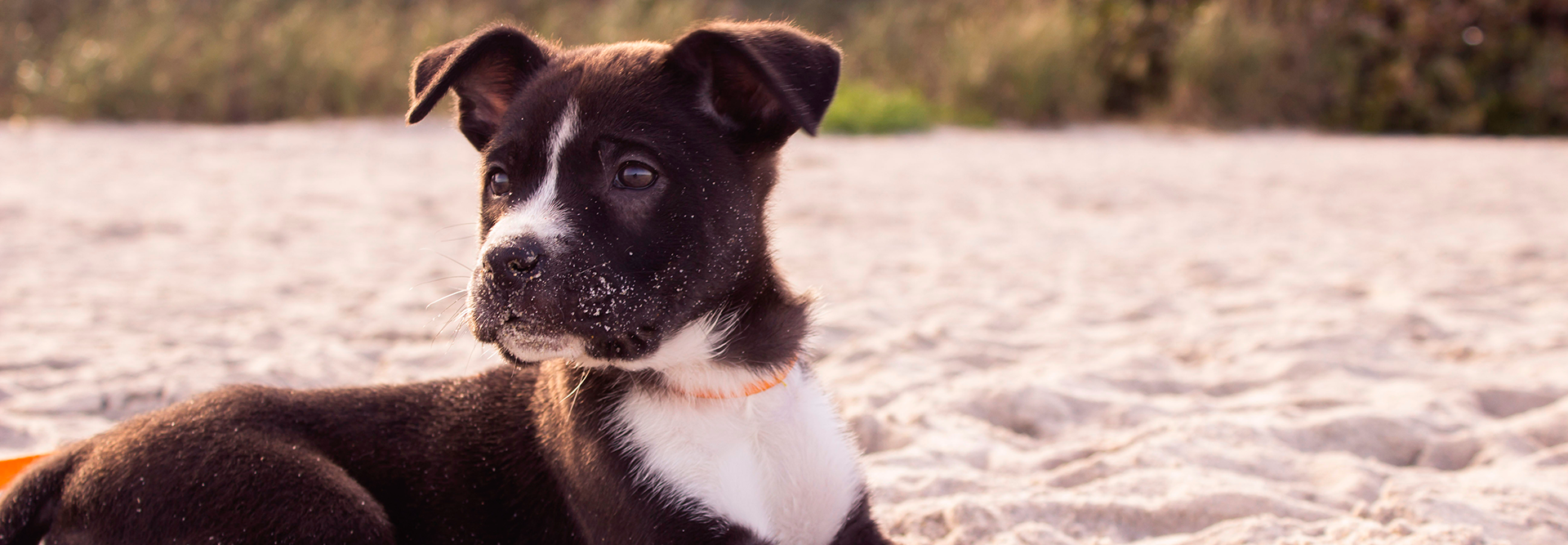
Are you ready to brush up on your Welsh? …? We’ll take that as a yes. The name for the purebred dog breed, “Corgi,” is actually two Welsh words: “cor” and “ci.” In Welsh, “cor” means dwarf, and “ci” means dog. See where we’re going with this? The Corgi, or “Cor-ci” in the Welsh tongue, […]
Are you ready to brush up on your Welsh?
…?
We’ll take that as a yes.
The name for the purebred dog breed, “Corgi,” is actually two Welsh words: “cor” and “ci.”
In Welsh, “cor” means dwarf, and “ci” means dog.
See where we’re going with this?
The Corgi, or “Cor-ci” in the Welsh tongue, is a pretty accurate description of this lovable dog breed!
Corgis are a special breed of dog that are dwarfs. genetically. In this article, you’ll learn all about the two Corgi breeds, which are the Pembroke Welsh Corgi and the Cardigan Welsh Corgi.
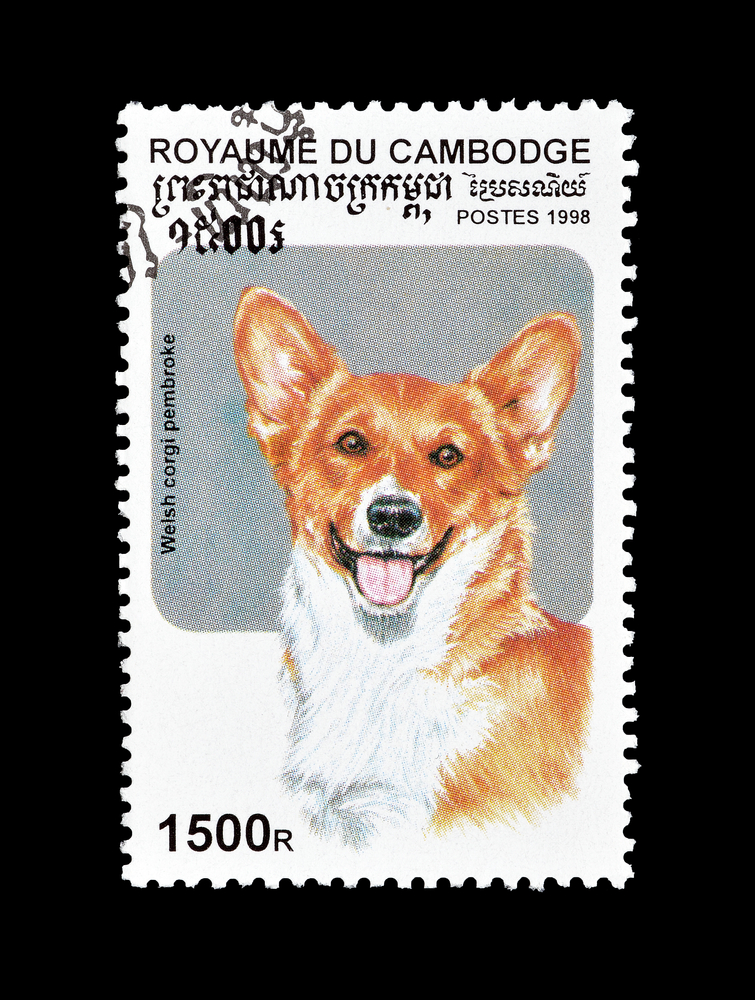
It isn’t easy to get a straight answer when trying to find out when Corgis first originated. Some sources will suggest that this dog breed has been around since the 1100s while others presume the Corgi breed is over 3,000 years old. Regardless of when this cute breed came onto the world stage, everyone agrees that Corgis were originally used as herding dogs for cattle, sheep, and horses. And the breeds we have today, namely the Pembroke Welsh Corgi and the Cardigan Welsh Corgi, can be traced back to the late 19th Century in Wales.
As their name implies, Corgis have a type of canine dwarfism, which causes their legs to be so short. This dwarfism is called achondroplastic dwarfism. Achondroplastic dwarfism is a dominant gene, which was great for breeders who wanted to produce more dwarf dogs.
Generally speaking, the average Corgi stands between 10 – 12 inches, paw to shoulder. This breed has a poised, stocky appearance, and the large eyes and cheerful attitude can melt the heart. Weighing between 20 – 30 lbs, Corgis move with a bit of a waddle if they’re not trotting happily.
Though this breed was originally used to herd livestock by gently nipping at the hooves of the animals it was herding, by the early 1900s, Corgis gained popularity as companion dogs. This was largely due to Queen Elizabeth II who both loved and bred Pembroke Welsh Corgis.
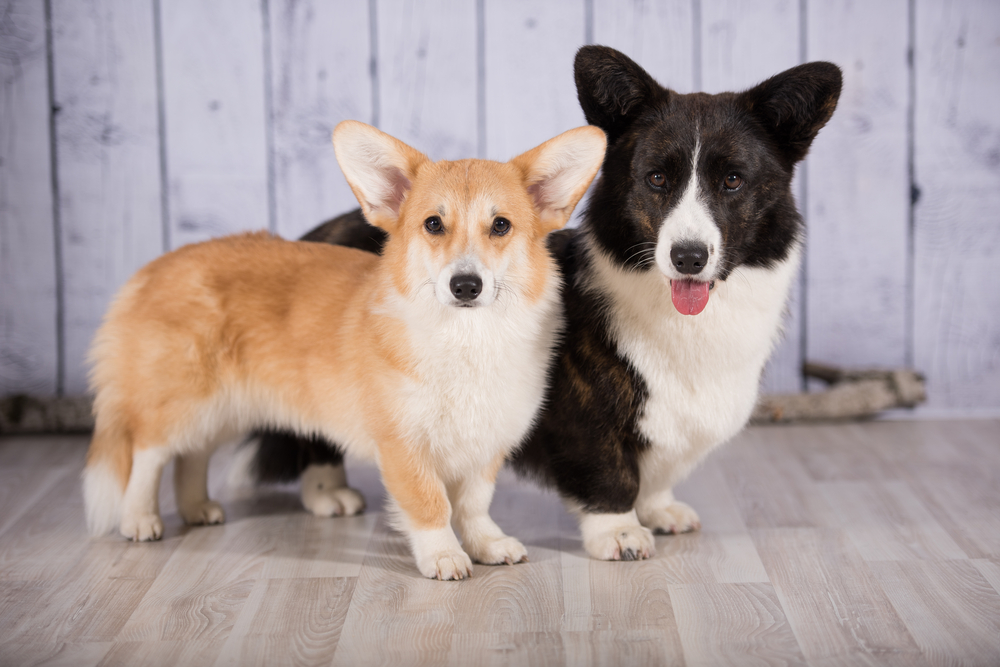
The main differences between these two Corgis are their size and area where each was popularized.
As the name suggests, the Cardigan Welsh Corgi tends to feel “chilly,” which is why this breed wears a brown “Cardigan” coat over its otherwise cream-colored fur. We’re entirely kidding, none of that is true.
Cardigan Welsh Corgis were bred and became popular in the rocky terrain of Cardiganshire, southwest Wales. Whereas, the Pembroke Welsh Corgi was local to the flatter terrain of Pembrokeshire in southern Wales.
Cardigan Welsh Corgis are larger in height and weight than their Pembroke cousins. Their coat is two colors, cream and the brown, black, or gray “sweater” of fur they have. Pembroke Welsh Corgis have a tan, taupe, or yellow “sweater.” Both have a “mask” of colored fur over their eyes, and their faces, underbellies, and legs are cream colored. And both have large, erect ears, making them appear happy and utterly adorable.
Another difference in appearance is that Cardigans have tails, while the tails of Pembrokes are typically “docked.”
Other than these aspects, the Pembroke Welsh Corgi and the Cardigan Welsh Corgi are very similar. Let’s take a look at the personality and characteristics of the purebred Corgi dog breed.
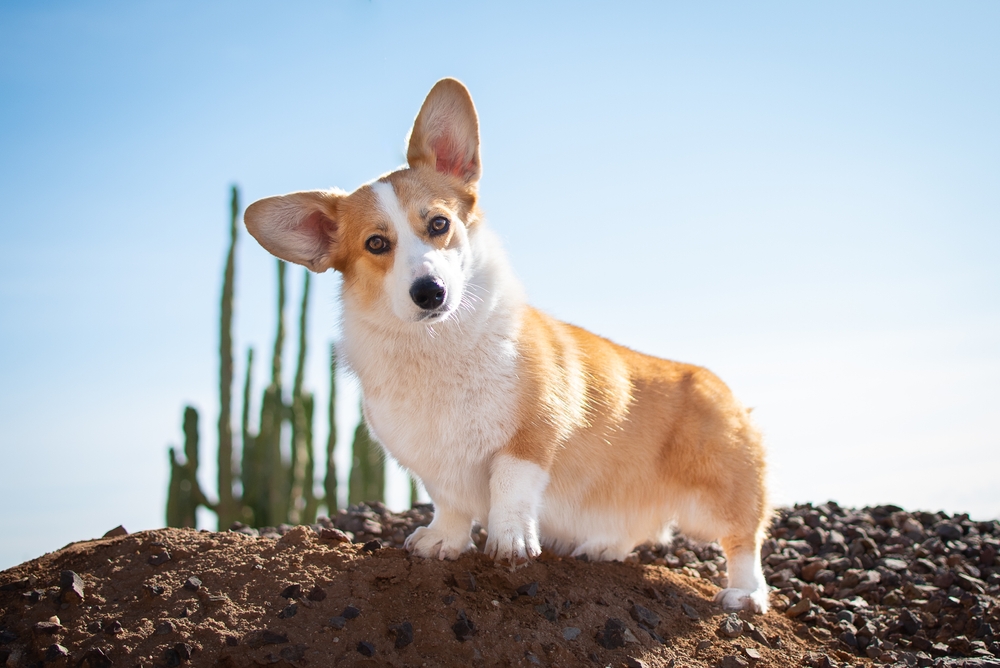
Both the Pembroke Welsh Corgi and the Cardigan Welsh Corgi are considered “affectionate and smart,” but the American Kennel Club notes that the Pembroke is “alert” while the Cardigan is “loyal.” The Pembroke is said to be ever so slightly more gentle towards children, affectionate, adaptable, and playful; and a lot more of a “watchdog” than the Cardigan.
If you’ve seen more Pembroke Welsh Corgis around than Cardigans, it’s not a coincidence. This breed tends to be more popular and sold more often than Cardigans, but that isn’t because the Cardigan’s personality is that different. The core personality difference is that Pembrokes are very friendly and outgoing towards new people and other domestic pets. Whereas the Cardigans tend to be initially reserved towards new people and proceed with caution. But once they warm up, they’re just as friendly, especially with regard to children and other animals.
Both Corgis are breeds that are happiest when they are with their owners, whether individuals or families. They enjoy doing whatever you’re doing, and thanks to their intuition and intelligence, you will notice your Corgi “picking up on” things you like and don’t like. One Corgi owner noticed that his Corgi consistently chased the household cat away whenever the cat tried to claw the arm of a couch. The reason his Corgi took on this job was because the owner had a habit of shooing the cat away to prevent it scratching the couch. Noticing the owner’s preference, the Corgi went to work!
Your Corgi will also take on a labor of love for you and be the “policeman” of the home, making sure the other pets follow the rules! It’s just the Corgi’s herding nature. Their DNA plus their love for you will keep your household safe and sound!
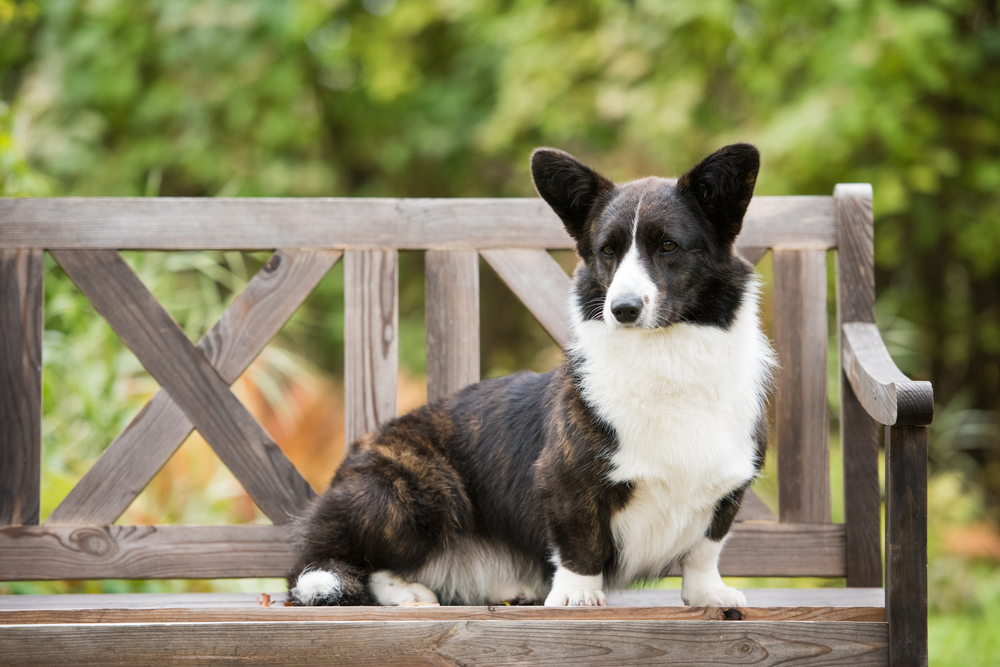
The Pembrokes shed slightly more than the Cardigans. Pembrokes have a short, double coat, whereas Cardigans have a medium-length, double coat. That being said, the grooming needs of these two Corgi breeds are basically the same.
Cardigans should be brushed once a week to keep their shedding at a minimum. Thanks to their medium-length hair, it helps to trim their paw fur. This way, they won’t track as much dirt into the home. Despite their longer fur, this breed does not need to get a short haircut for the hot, summer months. The coat itself, as it sheds, is designed to keep your Cardigan cool. But if you get a black or dark brown Cardigan, you’ll need to be a little more mindful that he doesn’t get too hot in the sun, as black absorbs heat.
Pembrokes shed slightly more, as we mentioned, and we recommend that you brush your Pembroke once a day during the spring and summer months. Thanks to their short hair, this breed will never need a haircut, but like the Cardigan, trimming the fur around its paws can help keep your home clean.
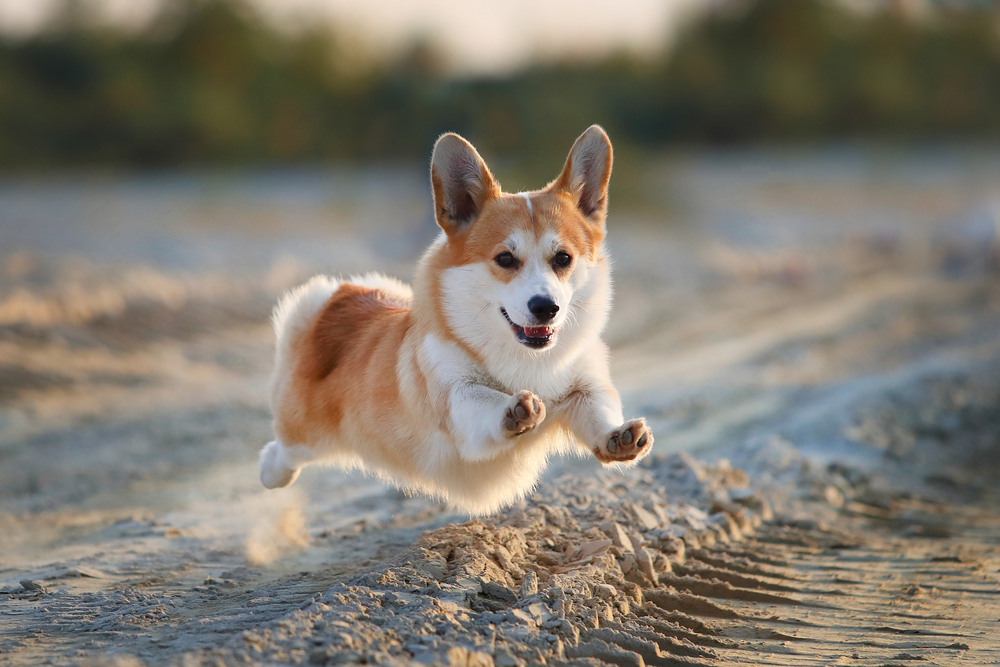
Both the Pembroke Welsh Corgi and the Cardigan Welsh Corgi are high-energy dogs. They needed all that energy to sprint after livestock and keep cattle, sheep, and horses safe and moving. Corgis are great hiking and walking companions, and you’ll be surprised how fast they can sprint. Just don’t expect them to jump or climb stairs (too frequently) as these activities can injure their long backs.
All told, your Corgi will just be happy to spend time with you, whether you two go for a long walk or to the dog park to play catch. But try to aim for 1 hour of daily exercise. And if you notice your Corgi racing through the house, that’s a sure sign that your pup needs to go outside to burn off his pent-up energy.
That’s everything you need to know about Corgis! Now that you’ve learned about the two breeds, are you going to get a Pembroke Welsh Corgi or a Cardigan Welsh Corgi? Stop by one of our Petland Florida locations and let our pet counselors introduce you to our adorable Pembroke Welsh Corgis! We hope to see you soon!